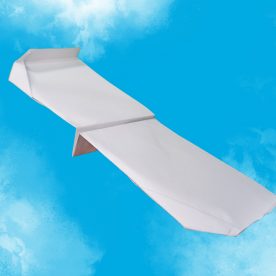Creative Ways to Test Your Skills in Paper Airplane Design Challenges
Creating paper airplanes can be a fun and interesting way to test your skills in engineering, aerodynamics, physics and math. These three topics are very important and they can be easily integrated into a paper airplane design challenge.
Math integration with making paper airplanes
Using a paper airplane science experiment is a fun and engaging way to introduce a student to mathematics. The activity tests the effects of physics and drag forces. This STEM project will also teach students about aerodynamics and flight stability.
After learning about the different parts of an airplane, students will design their own paper plane. They will then use the data they collect to make a graph of their plane designs. This activity is also a great way to demonstrate how math can be used to record and analyze data.
For this activity, you can either have students create their own planes or have them build a model. Regardless of which choice you choose, you should have students write down the time it takes to launch their airplanes and their flight distances. You can then use the data to measure their performance and comprehension.
Physics
Using a paper airplane as a science experiment can help kids learn more about aerodynamics and flight. By conducting a series of experiments, students will gain a deeper understanding of how to design a plane that will fly. The lesson encourages critical thinking, sportsmanship, and technology research.
The Levittown Public School fifth graders recently held a paper airplane challenge. They discovered that the forces of lift and thrust act on a paper airplane to make it fly. They also developed a mathematical model to explain how the plane flies.
A science fair project on paper airplanes can be a fun way to explore physics. Different types of paper can be used, and the results of the experiment can be recorded and graphed.
The fifth graders collected data on their test flights, and made changes to the models based on their findings. They developed a “flight simulator” to help them learn about the principles of flight.
Aerodynamics
Creating and using a paper airplane is a great way to study aerodynamics. There are four forces that act on the plane, including lift, thrust, drag, and weight. Each force acts on the plane differently, affecting its flight.
For instance, the lift is a force that acts on the wings of a plane. When the plane is moving upward, the lift forces overcome the force of gravity. This makes the plane fly long distances.
The drag is a force that acts on the paper airplane, reducing its speed. The drag forces are due to the shape of the plane and the movement of the air. The material density of the plane is also a factor. Adding paper clips to different parts of the plane can improve its flight.
Engineering
Using paper airplanes to test your engineering skills can be a fun and educational activity. You will have to think outside the box and use engineering design principles to create a plane that will fly the farthest.
The best paper plane is one that can carry cargo over a set distance. Some planes fly straight, while others zigzag. You should also consider the weight of the paper you are using, as the heavier the paper, the farther the airplane will fly.
It is also a good idea to use an electronic stopwatch to record your flight time. This can be done using your cell phone or a stopwatch app.
You can also build a target using bowls. You can use a wooden spoon or a straight edge to make the cleanest folds possible.
Building and testing different models of an airplane
During the design process, engineers test different models of an airplane before they build the real thing. Each aircraft is tested to meet certain requirements, such as performance and maneuverability. This certification process is expensive and long, but it is crucial to the commercial success of a new airplane.
During the certification process, the airplane is tested in air, simulators, and other environments. This includes the structural strength of the airframe. The tests are used to determine if the airframe can handle extreme loads.
The testing process can involve a number of different factors, including the strength of the wings, ailerons, and spoilers. The airframe is also stressed during flight cycles. These tests measure the maximum wing bending, aileron and spoiler function, and fatigue.
Modern aircraft are designed by modeling them in wind tunnels. Engineers can also perform tests to determine how well a new design will work in a variety of air conditions.










